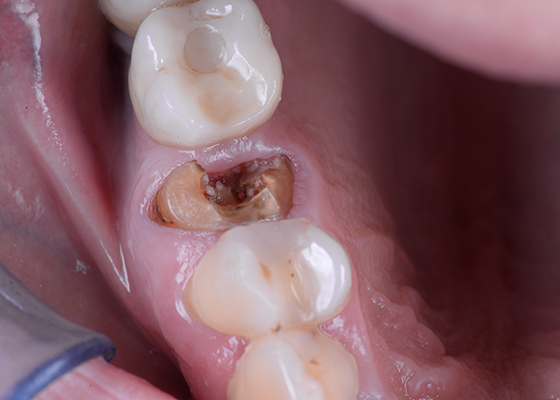Teilnahmebedingungen für das Gewinnspiel “Brain Boost Event 2025 – Gewinne 2x Teilnahmeplätze für dich und deinen Lieblingskollegen in Seefeld”
Teilnahmebedingungen:


Restoring root-canal treated teeth has its own set of challenges – including choosing the right treatment method. From post-and-core to endocrowns, discover what you should consider before reaching a decision.
Restoring a root-canal treated tooth can be challenging. Preventing contamination or fracture is always a concern – especially when a large part of the coronal tooth structure is missing, making it difficult to find sufficient retention for the restoration. With so much at stake, how do you achieve restorative success? It starts by taking a closer look at the treatment options available and addressing significant case factors before making a decision.
While insufficient tooth structure is a common issue, advancements in adhesive dentistry allow dentists to bond the restoration to the remaining tooth substance, even if proper retention is missing. Keep in mind that at least one intact wall should be present to provide a decent bonding surface for the new overlay restoration. In the posterior region, additional retention can be found in the pulp-chamber of the molar, enabling an “endocrown”, or monolithic restoration – without the need to place a post-and-core. One study demonstrated a 98% survival after seven years in place.1

Case #1 images 1-3: After fracture of the palatal wall and filling, only the buccal wall remained. This was sufficient to bond the restoration, without having to place a post. Some gingivectomy was done on the palatal side to expose the margin, and the buccal wall was lowered to allow cuspal coverage. The final restoration was luted to the tooth using an adhesive resin cement (3M™ RelyX™ Ultimate Adhesive Resin Cement).
Despite its success in the molar area, a post-and-core buildup is still recommended over an endocrown for single-rooted teeth when sufficient coronal tooth substance is missing.2 When planning for post-and-core treatment, the condition of the remaining root and amount of residual coronal material is important in order to provide at least 2 mm of ferrule, which has been shown to improve the longevity of the restoration. Traditional cast-metal post-and core restorations demonstrate predictable long-term outcomes, with a mean survival of 13.5 years.3 But over the past decade, the use of adhesive cements and fiber posts has increased – and have demonstrated similar durability to traditional methods, with one study showing a survival rate of 94% after six years.4 The significant difference between the two methods, however, is their failure modes. While the cast metal post-and core often results in a catastrophic fracture of the remaining root, a fiber post-and-core will fracture at the post or simply loosen.5 This is because the mechanical properties of the fiber post resemble those of the natural tooth, which allows the material to absorb and dissipate stress instead of transferring all the tension to the root.

Case #2 images 4-6. Sufficient ferrule remaining for placement of a fiber post cemented with a self-adhesive resin cement followed by a composite core build up.
If the ferrule is lacking, additional retention can be created with orthodontic extrusion or surgical crown lengthening. However, when the overall prognosis of the tooth is doubtful, extraction and implant placement might be a better option.
Whenever you need to restore a root-canal treated tooth, start by reviewing the treatment options alongside the unique factors for each case. Use the following “at-a-glance” graphic as a starting point. It is based on the consensus of a group of clinical experts as part of 3M’s “Success Simplified” program. While it is not an exhaustive guide, it can help you identify the best path forward towards restorative success.

Sources

How do you motivate your patients? Discover how caries risk assessments and motivational interviewing tactics can help you connect with…

Caries is a complicated multifactorial disease. In this two-part series, explore how caries risk assessments can help improve evaluation and…